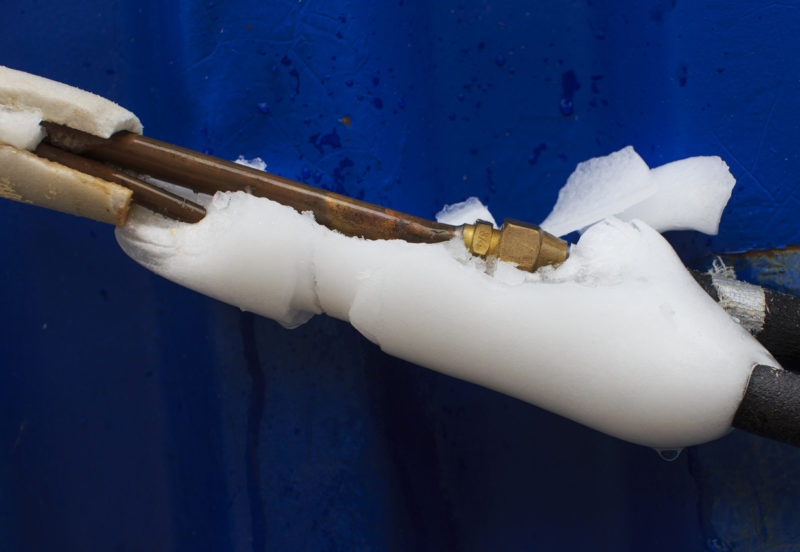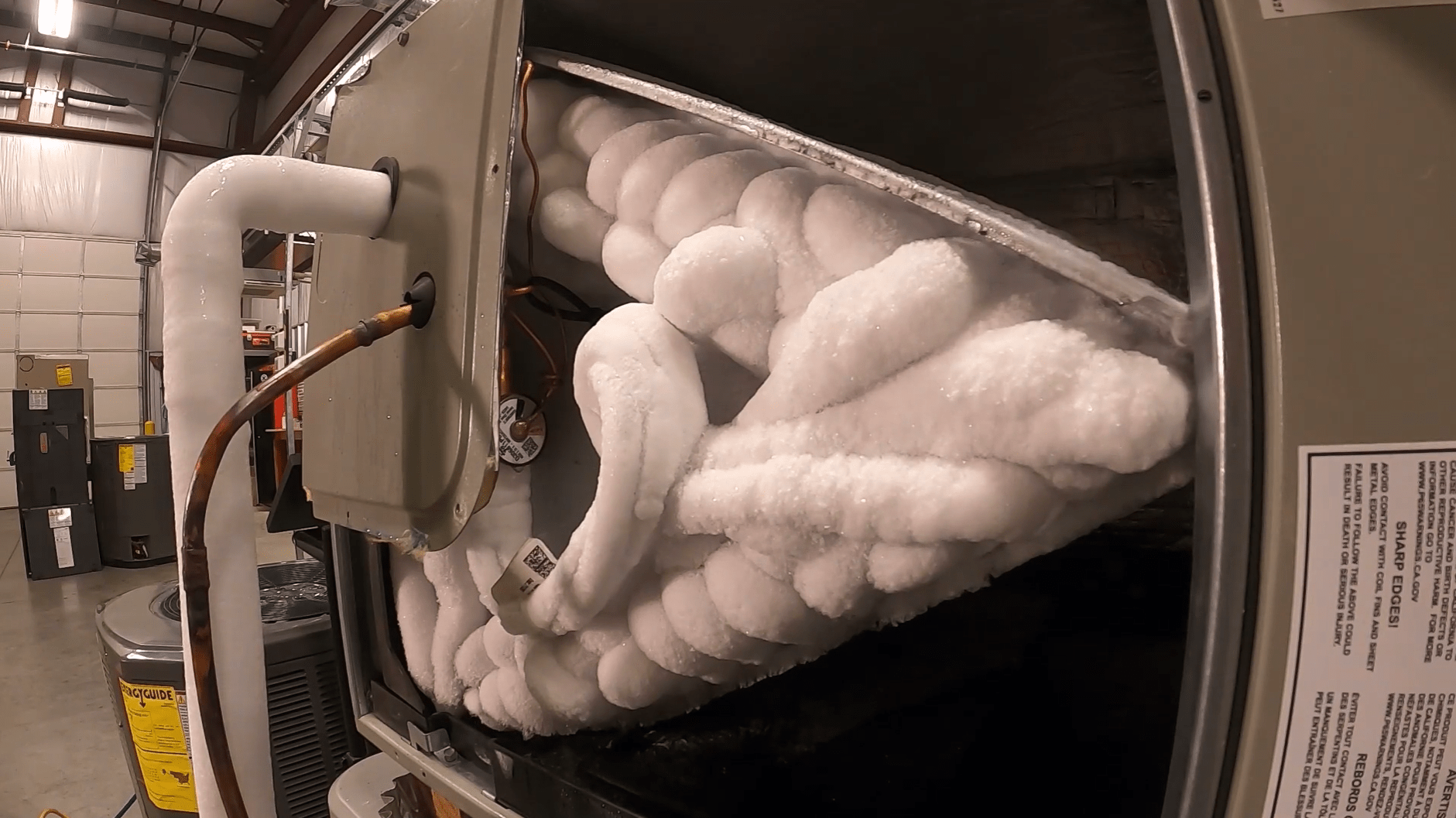Everybody maintains their unique assumption with regards to What Do I Do If My AC Pipe Is Frozen.

Introduction
Finding that your air conditioning pipe is iced up can be concerning, particularly throughout warm summer season when you rely on your ac unit the most. Recognizing what to do in such a circumstance is important to prevent more damages to your cooling system and guarantee your comfort indoors.
Comprehending the Causes
Several aspects can add to the freezing of an AC pipeline. Understanding these causes can help you attend to the issue properly.
Lack of Airflow
One typical cause of a frozen air conditioner pipeline is inadequate air movement. When the air flow over the evaporator coil is limited, it can create the coil to drop below freezing temperature, causing ice formation on the pipeline.
Reduced Refrigerant Levels
Inadequate refrigerant degrees in your air conditioning system can also cause an icy pipeline. Reduced refrigerant levels can trigger the stress in the system to drop, bring about the freezing of dampness on the evaporator coil.
Winter Conditions
In cooler climates, freezing temperatures outside can contribute to the freezing of air conditioning pipes. If your air conditioning unit is not properly protected or if there are leakages in the ductwork, chilly air can penetrate the system, triggering the pipeline to ice up.
Dirty Air Filters
Unclean or blocked air filters can limit air movement in your air conditioning system, resulting in numerous problems, including an icy pipe. It's essential to replace or clean your air filters frequently to make sure correct airflow and avoid ice accumulation.
Indicators of a Frozen Air Conditioning Pipe
Acknowledging the signs of a frozen air conditioning pipe is crucial for timely action.
Reduced Airflow
If you see a significant reduction in air flow from your vents, it could show an icy pipeline.
Ice Buildup on the Pipe
Noticeable ice buildup on the refrigerant line or the evaporator coil is a clear sign of a frozen AC pipeline.
Weird Sounds from the Unit
Unusual sounds, such as hissing or gurgling, coming from your air conditioner unit can indicate that there's ice existing on the pipe.
Immediate Actions to Take
When faced with a frozen air conditioning pipeline, it's necessary to act rapidly to avoid more damages to your air conditioning system.
Turning off the air conditioning
The very first step is to turn off your a/c unit to stop the system from running and aggravating the issue.
Checking for Blockages
Examine the area around the indoor device for any obstructions that might be obstructing air movement, such as furnishings or drapes.
Thawing the Pipe
You can use gentle methods like positioning towels soaked in warm water around the icy pipeline to help thaw it gradually.
Preventive Measures
Taking safety nets can aid avoid future incidents of an icy AC pipeline.
When DIY Methods Fail
If your attempts to thaw the pipe or address various other problems are unsuccessful, it's time to hire a professional.
Importance of Hiring a Professional HVAC Technician
A licensed HVAC technician has the experience and tools essential to diagnose and repair problems with your air conditioner system safely and efficiently.
Regular Maintenance Checks
Schedule normal maintenance consult a professional HVAC technician to make certain that your air conditioner system is running successfully.
Changing Air Filters
Regularly change or clean your air filters to stop air flow restrictions and keep ideal performance.
Shielding Exposed Pipes
If your AC pipelines are subjected to cool temperatures, take into consideration insulating them to avoid freezing during winter season.
Seeking Professional Help
If DIY techniques stop working to fix the issue or if you're unsure about exactly how to continue, it's finest to look for aid from a certified HVAC professional.
Conclusion
Managing an icy air conditioner pipe can be a discouraging experience, yet understanding just how to react can assist decrease damages and recover comfort to your home. By recognizing the causes, identifying the indications, and taking punctual action, you can properly address the problem and avoid future incidents.
What to Do If Your AC Line Is Frozen
Make Sure All Supply and Return Air Vents Are Open
If you notice problems with airflow, the first thing you should do is check your supply and return vents. Supply vents distribute clean, conditioned air throughout your home. As this air becomes stale, it’s pulled into the return vent, where it’s reconditioned before being sent back out through the supply vent.
When these vents are closed, air won’t flow in the home. Before examining your AC, check the vents in every room and ensure they’re all open.
Check for a Dirty Air Filter
Another possible cause of limited airflow is a dirty air filter. Your air conditioner’s filters catch elements you don’t want to breathe in, such as dirt and dust. Over time, filters can become clogged, ultimately blocking air from flowing in and out. The lack of airflow can then cause the entire coil to freeze and will completely restrict any air from moving through it. The AC may need to be powered off for one to two days to allow the coil to thaw after replacing the filter to allow proper functioning of the unit. This debris can also accumulate on your AC’s evaporator coil, requiring a more serious repair. In general, air filters should be cleaned regularly (about every two weeks).
Assess Your Outdoor Unit
In addition to checking your AC, assessing the outdoor unit is a good idea. Also known as the condensing unit, it works with your interior unit to release heat outside. An issue with the outdoor unit can result in rising internal temperatures.
Overgrown Shrubs or Clogged Leaves
From leaves and twigs to shrubs and debris, there’s no shortage of outdoor elements that can accumulate around your condensing unit. When these elements get lodged inside the unit, they can block airflow. Fortunately, removing the blockage can solve the problem.
Sounds of a Broken Fan
Shrubs and leaves aren’t the only things that can impede your outdoor unit’s airflow. If the fan is broken, the unit won’t be able to properly get rid of heat — which means the internal temperature won’t go down. First, make sure the fan is spinning. If it is, check for the following sounds of a broken fan:
Buzzing Rattling Screeching Hissing Clicking Preventative Measures
Nobody wants to deal with a frozen AC line. In addition to causing problems with your air conditioner, they require professional repairs. On the bright side, there are preventative measures you can take to help ensure this issue doesn’t arise in the first place.
https://www.coopergreenteam.com/blog/what-to-do-if-ac-line-frozen

I recently found that write up about Air Conditioner Frozen? How To Fix your Frozen AC Line while browsing on the internet. Remember to take the opportunity to promote this entry if you liked it. Thanks for going through it.
Book Your Service